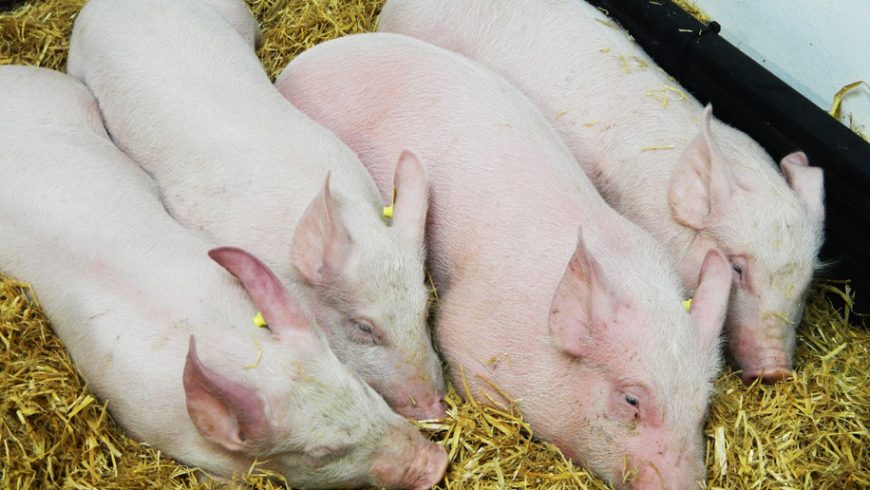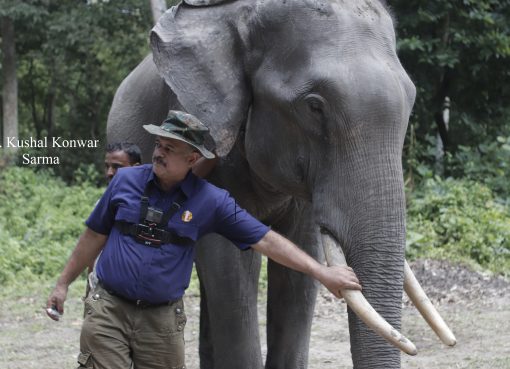Dr. Sangeeta Das
M.V.Sc Scholar
Department of Veterinary Microbiology
College of Veterinary Science, Assam Agricultural University, Khanapara, Guwahati-22
Email id: sangitakashyap9864@gmail.com
[This article has been published in view of the current outbreaks in Assam and is being published for the purpose of awareness only.]
The year 2020 began with full of uncertainties. Amid coronavirus pandemic, another microbe affecting only pigs has topped the headlines. This virus has already badly hit the pig herds of eastern Assam with huge numbers of deaths reported, and it has sent the piggery sector into retreat. Piggery production in rural Assam is invariably a small scale, backyard and market-oriented enterprise, practised mainly by the tribal farmers (Shyam et al., 2016). It has established itself as a major livelihood supporter for the pig farmers and has significantly improved their socio economic condition. Over the past few weeks, unnatural deaths of more than 15,000 pigs were reported in Sivasagar, Dhemaji, Dibrugarh, Lakhimpur, Jorhat and Biswanath districts of Assam. The actual cause of death couldn’t be ascertained until first week of May, when reports from the National Institute of High Security Animal Diseases (NIHSAD), Bhopal finally confirmed the epidemic as African Swine Fever (ASF).
However, considering the endemicity of Classical Swine Fever (CSF) in pig herds of NE India (Singh et al., 2018), initially it was assumed that the pigs might have died of CSF. It is a contagious viral disease of domestic and wild pigs caused by a RNA virus from the Pestivirus genus of the family Flaviviridae (Blome et al., 2017). This fever of pig is clinically similar to an emerging fatal disease of pigs, African Swine Fever (ASF), caused by a DNA virus from the genus Asfivirus of the family Asfarviridae that is completely unrelated to CSF virus. The key clinical signs include high fever, blue-purple cyanosis of extremities (snout, ears, tail and lower legs), discrete haemorrhages in the skin, respiratory distress, nasal and conjunctival discharge, and abortion in pregnant females (Schulz et al., 2017). Thus, it requires laboratory tests to differentiate them. Both CSF and ASF are World Organisation of Animal health (OIE) notifiable diseases and are constantly feared threat for the global pig industry. The disease CSF continued to be present as an endemic among the NE pig population and vaccination has been used to control it. On the contrary, no vaccination is so far available for ASF; thus the only available option for control is stamping-out policy (Rock, 2017). Until in August 2018, when ASF virus reached China, it was believed to be restricted mostly to the African continent. It disseminated at an astonishing speed to every province of China and slayed 60 % of its pig population (Wang et al., 2018). Now, ASF has spread beyond its borders and recent outbreak has been reported from a village in China nearing Arunachal Pradesh; thus, becoming a potential threat to pig husbandry in this region of India.
ASF is transmitted through direct contact between healthy and infected pigs, with contaminated fomites and farm personnel, and by feeding of contaminated garbages. The virus can even survive in fresh pork and processed pork products for long time up to years when frozen and ingestion of a trace amount of this infected pork meat or product can spread the disease. Owing to this, the Assam government has imposed a ban on sale and distribution of pork, barred movement of farm personnel and declared the affected areas as containment zones to prevent the spread of the virus (Nath, 2020). Moreover, ASF can also be transmitted by arthropods, such as the soft-bodied ticks. Given the ecological suitability of our country, the arthropod vectors may probably play a key role in disease transmission in the long run.
But at this critical moment, the concern is that just like the current COVID-19 pandemic, is another pandemic coming our way? With this ample warning, the pig farmers have to slow down their activities to make the piggery sector last and switch to tactics to deal with the tsunami that is almost imminent. With the lessons learnt from the past outbreaks and previous experiences of similar disease like CSF, our farmers should use the old tactics to fight the new enemy by utilizing the CSF contingency plans as blue print to control ASF. For any disease prevention and control, the containment system should be in place before it’s too late. Preparedness in the form of contingency planning, standard operating procedures (SOPs) and tenable financial assistance forms the key. Disease awareness among all stakeholders, from veterinarians to pig farmers is much necessary to bridge the knowledge gaps regarding ASF signs and transmission mechanisms, and timely disease reporting to local authorities. It should emphasize that disease control programmes primarily benefits pig farmers. As an early action, zoning of the region into infected zones, surveillance zones and free zones is mandatory to manage, contain and control the spread of disease. As per ASF-FAO Emergency Prevention System for Animal Health, application of super-strict biosecurity measures within and outside the farm, limiting pig movement, culling of all pigs within 1 km radius of infected farms and surveillance within a 7 km radius with strict monitoring of illegal transport of live pigs and pork products across borders should be implemented. As a consequence, the concerned authorities should focus on making the required test kits available for early detection of the virus. Likewise, COVID-19, quarantine could also be imposed by isolating the infected pigs from the rest of the herds, potentially saving thousands. In addition, proper disposal of food waste (food services, airports, seaports) have to be set up. In case of outbreaks, all pigs on affected farms should be culled immediately, carcasses and bedding/ litter should be properly disposed off with thorough disinfection and the infected zones should be designated with restricted pig and farm personnel movements. Another crucial factor to the success of disease control is compensation and social support to the affected farmers and communities so that they can cooperate in disease control programme and get back to normal at the end of the programme. This will stop the illegal smuggling and surreptitious sale of live pigs or pork products out of infected area to avoid losses.
In context to COVID-19, that’s affecting humans all around the globe, the real mortality figure is much lower as compared to this pig virus that led to large-scale deaths within the blink of an eye. Now it is not just an early warning but we need to initiate some serious measures and strategies to tackle the disease for the pig business to sustain in this part of the country. However, none of the pig viruses possesses a risk to human health, it’s not zoonotic. It is neither a public health threat, nor a food-safety concern. But at present, there is no cure for this disease in pigs. Until a vaccine is developed, we have to learn to live with it and to control its spread by implementing appropriate control measures.
References:
https://www.oie.int/en/animal-health-in-the-world/animal-diseases/african-swine-fever/
Shyam, J.; Tripathi, H. and Balaraju, B.L. (2016). Backyard pig rearing practices among tribals of Assam. Advances in Life Sciences. 5(18): 2278-3849.
FAO ASF situation update – African Swine Fever (ASF) – FAO Emergency Prevention System for Animal Health (EMPRES-AH). http://www.fao.org/ag/againfo/programmes /en/empress/ASF/situation_update.html
Wang, T.; Sun, Y. and Qiu, H. (2018). African swine fever: an unprecedented disaster and challenge to China. Infectious Diseases Poverty. 7: 111.
Singh, V.K.; Rajak, K.K.; Kumar, A. and Yadav, S.K. (2018). Classical swine fever in India: current status and future perspective. Tropical Animal Health and Production. 50(6): 1181-1191.
Blome, S.; Staubach, C.; Henke, J.; Carlson, J. and Beer, M. (2017). Classical Swine Fever-An Updated review. Viruses. 9(4): 86.
Schulz, K.; Staubach, C. and Blome, S. (2017) African and classical swine fever: similarities, differences and epidemiological consequences. Veterinary research. 48: 84.
Rock, D.L. (2017) Challenges for African swine fever vaccine development-“…perhaps the end of the beginning.”. Veterinary Microbiology. 206: 52-58.
Nath, K.H. (2020, April 26). Assam government bans sale, distribution of pork meat after mysterious virus kills 1900 pigs. India Today. Retrieved from https://www.indiatoday.in/india/story/assam-government-bans-sale-distribution-of-pork-meat-after-mysterious-virus-kills-1-900-pigs-1671236-2020-04-26




